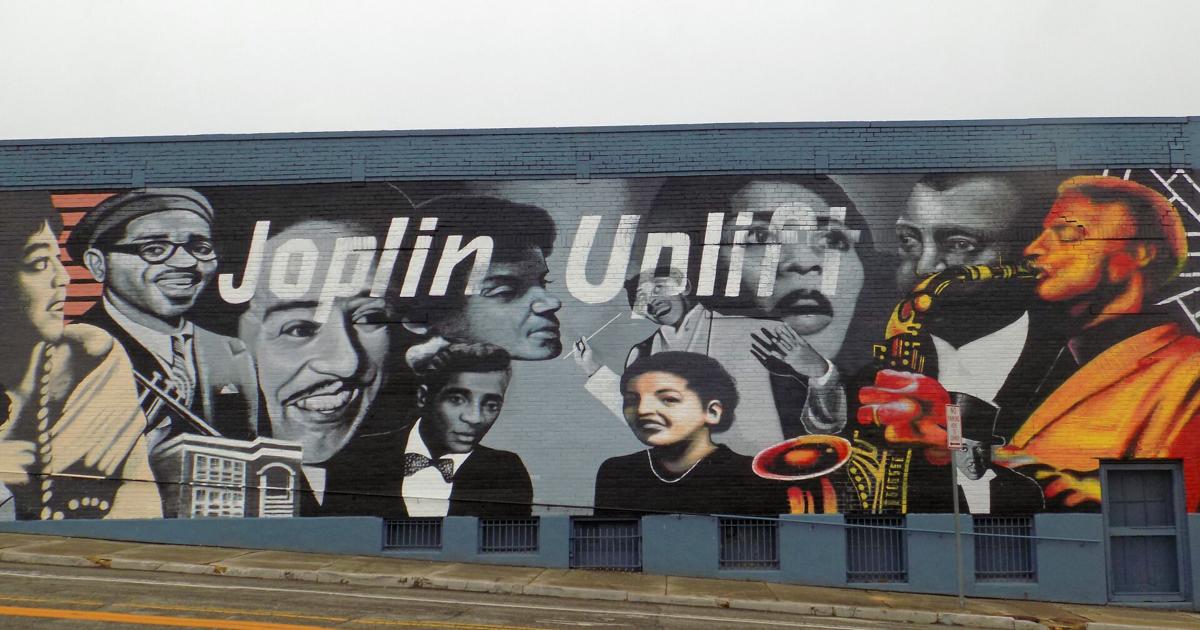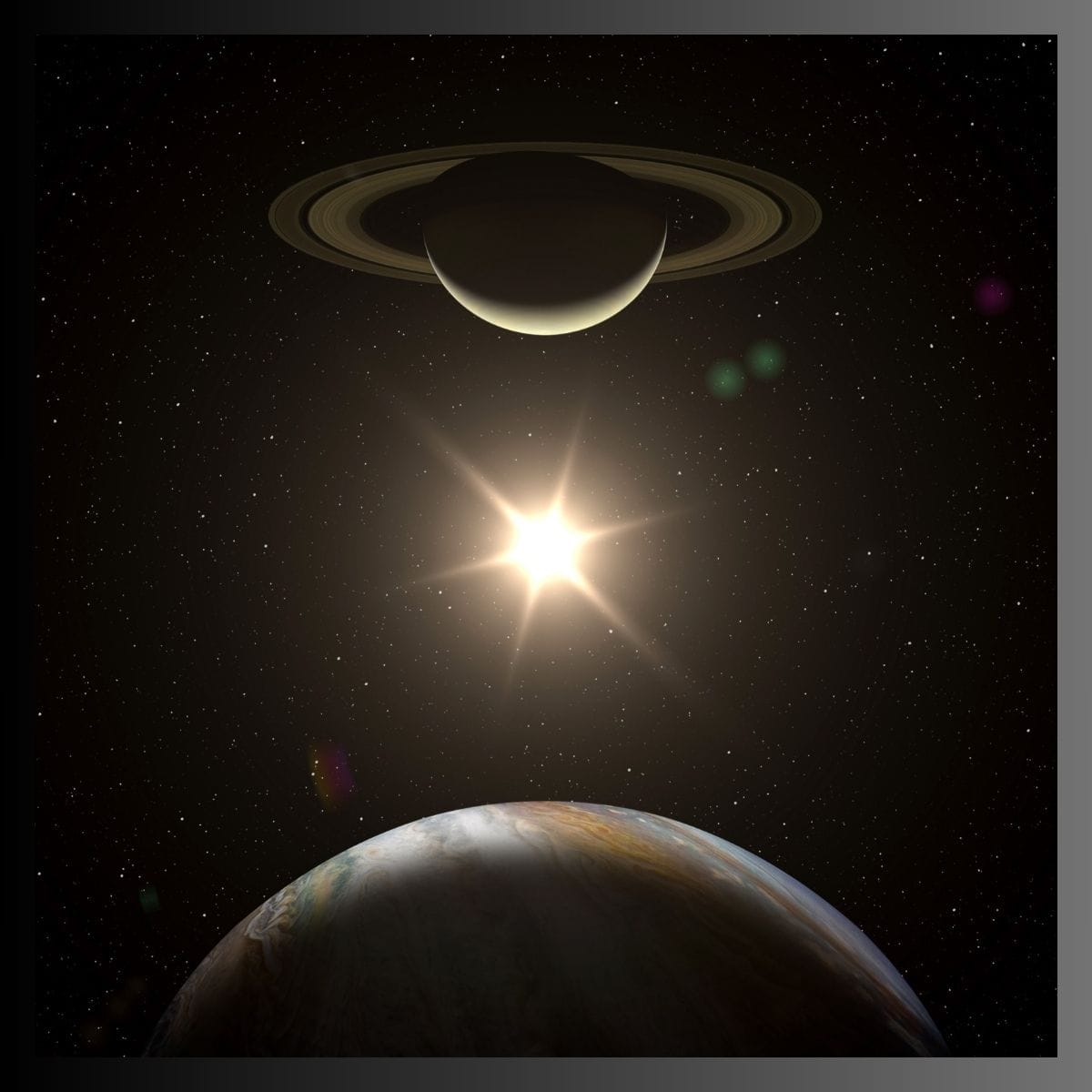There’s some significant visual art going on in downtown Joplin right now, and it deserves a view, considering its relation to local history.
One is the downtown’s newest addition in public murals, a much-deserved tribute to local Black history. Created on the north exterior of Bruce’s Point of View Optical at First and Main streets, it’s a stunning montage of local Black landmarks and national artists who performed or lived here in yesteryear.
The other art of significance is a couple of blocks south at Spiva Center for the Arts. It includes two exhibits that are the last to hang in the 109-year-old Cosgrove Building that Spiva has called home for nearly 30 years.
A celebration of completion of the new mural was scheduled for last Saturday night, but it was canceled with arrival of the much-needed rain that day. The celebration was rescheduled to September, but a date has not yet been set.
The delay will allow organizers to build a celebration with larger splash than what was scheduled for last weekend.
“We’re regrouping and putting together a much larger event. We hope to have family members of some of the mural subjects attend along with Missouri dignitaries,” said Nanda Nunnelly-Sparks, a leader in the Langston Hughes Cultural Society and the Minnie Hackney Community Center, which spearheaded the mural project.
The muralist commissioned for the project was Alexander Austin, a Black artist from Kansas City with a hefty art background. His work has hung in an exhibit in Harlem, and he gained listing as one of the top 30 Black artists in America in 1994. His work has appeared in respected national publications, and it hangs in the homes of celebrities. Among the works to his credit is an 18,000-square-foot mural in Kansas City’s Power and Light District.
This artist is the real deal. His affable personality, coupled with his determination to keep working despite the recent 100-degree temperatures, won over many in the community.
Austin’s mural, primarily in black and white, includes two of Joplin’s native sons, literary great Langston Hughes and jazz luminary Charles McPherson, surrounded by musicians who performed in Joplin, affecting McPherson as a child living here and leading to a music career of more than 60 years. Mural images include Scott Joplin, Marian Anderson, Ella Johnson and Ella Fitzgerald, Cab Calloway, Sammy Davis Jr., Dizzy Gillespie, Mamie Smith and Duke Ellington.
Interspersed with those images are references to local Black history — Lincoln School, which served Black students, and Melissa Cuther, one of the African American community’s trailblazers who taught at Lincoln School in the early 1900s. It also includes a banner of Joplin Uplift, a reference to a local Black-owned newspaper published in the late 1920s.
The mural project has been in the works for a couple of years as a collaboration of organizations serving the Black community — the Langston Hughes Cultural Society and the Minnie Hackney Community Center — and arts organizations Connect2Culture, Post Art Library, the Joplin Arts District and Spiva Center for the Arts, along with Visit Joplin.
At Spiva, the two exhibits closing out the Cosgrove location are “Rhapsody: The Urban Fantasy Paintings of Rob Mango” in the Main Gallery and “Local Color: Reflections of Joplin” in the Regional and Upstairs galleries. The exhibits run to Oct. 29.
By then, the art center anticipates to have moved into the new Harry M. Cornell Arts & Entertainment Complex, nearing completion at Seventh Street and Joplin Avenue.
That move will usher out an era for the historic Cosgrove Building, and it seems only appropriate that one of its final exhibits is “Reflections of Joplin,” featuring works centering on local history in observance of next year’s city sesquicentennial.
The works were created by members and students of Local Color Art Gallery and Studio, our artists cooperative at 10th and Main streets. It includes 90 pieces in a range of mediums documenting landmarks and historical figures of Joplin.
This exhibit is wide-ranging in documenting our community through art. But it’s just as interesting as a collaborative art project, one that required considerable research but allowed creative freedom of style. Still, it led some of the artists to diverge from their typical styles. Abstract painter Mary Parks created a mining scene in realist style. Jesse McCormick typically creates paintings that are mystical in nature. In this exhibit, he displays his abilities in architectural painting. The exhibit is a display of the breadth of talent of local artists.
In Spiva’s Main Gallery are the surrealist paintings and sculptures of Rob Mango, a Manhattan painter and sculptor who has shown extensively throughout the U.S. and Europe and has had his work reviewed in such publications as Art in America, the Huffington Post and the New York Times.
Mango’s large-scale paintings are allegories in both urban and natural settings. A couple of pieces are symbolic narratives of the 9/11 destruction and rebuilding of the New York skyline; another is a Utah desert setting, throbbing with spirituality, a broiling storm serving as a harbinger of something to come. Mango mixed his paint with sand from that Utah desert to give the painting dimension.
These exhibits, particularly “Reflections of Joplin,” give an honorable goodbye to an era for a historic building, as well as for Spiva. Meanwhile, the mural is a deserving recognition of the contributions of our Black community. All are worth the time to view them.












